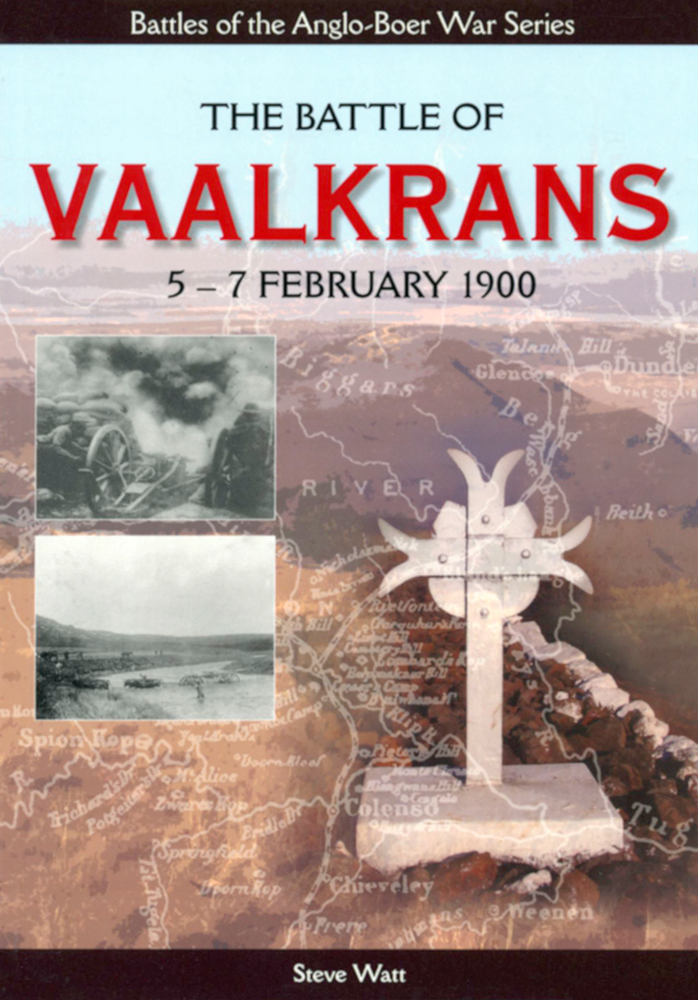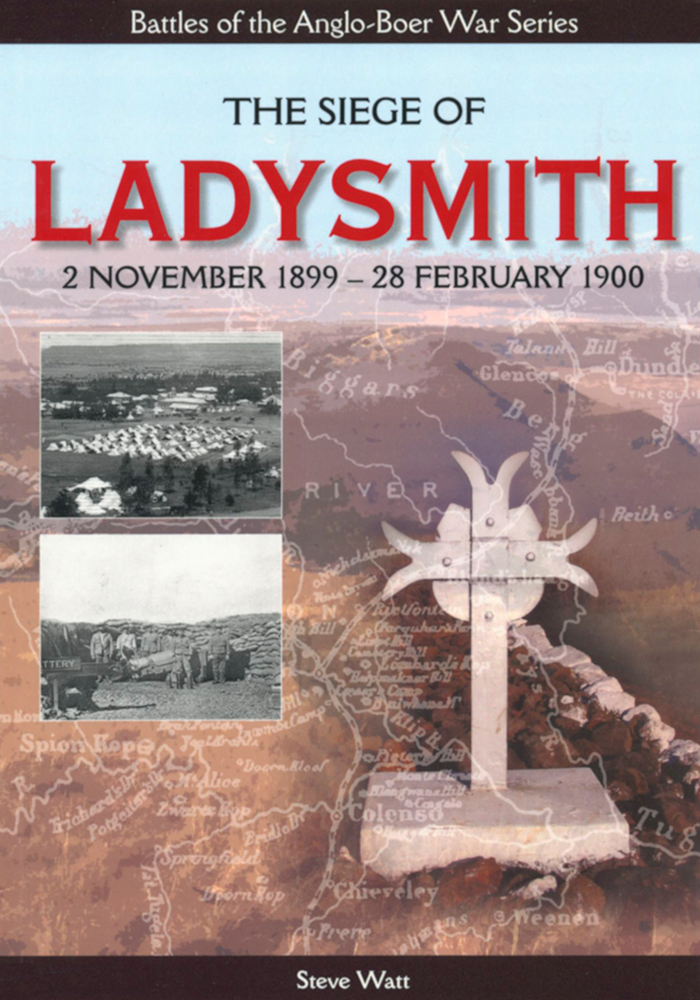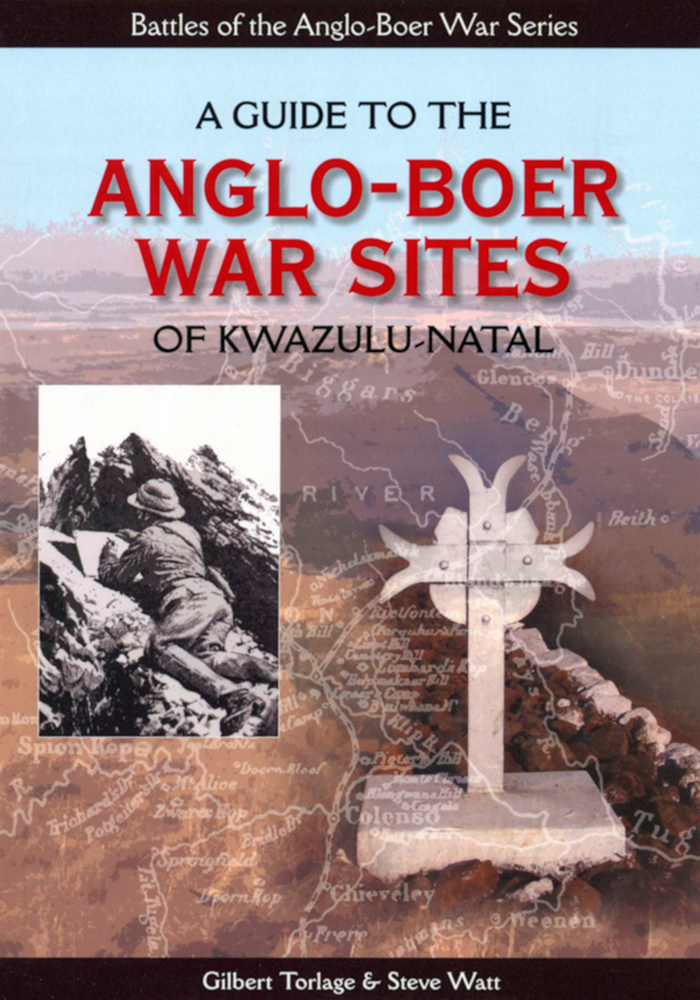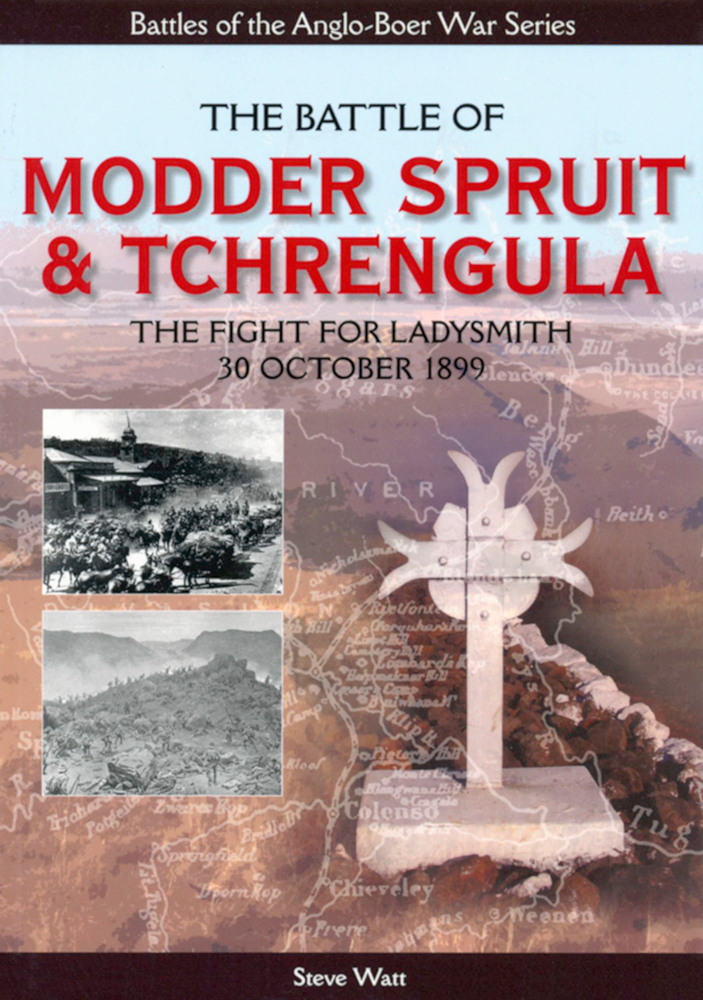The Battle of Vaalkrans: 5–7 February 1900, by Steve Watt
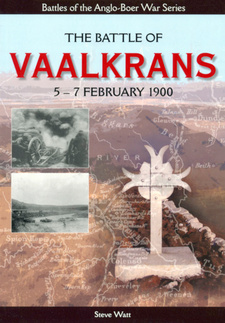
The Battle of Vaalkrans: 5–7 February 1900, by Steve Watt. The Anglo-Boer War Battle Series. 30 Degrees South Publishers (Pty) Ltd. 2nd edition. Johannesburg, South Africa 2014. ISBN 9781928211433 / ISBN 978-1-928211-43-3
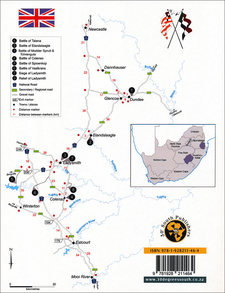
Overview map of the Battle of Vaalkrans: 5–7 February 1900.
Author Steve Watt describes General Buller's plan to capture Vaalkrans, where in the Battle of Vaalkrans on 5–7 February 1900 his troops were forced to retreat.
On 11 October 1899 the Anglo-Boer War began with the Boer invasion of the Natal and Cape Colonies. Nowhere, from a Boer point of view, did the situation call more urgently for immediate action than on the Natal border. Both the Transvaal commandos and those from the Orange Free State invaded Natal via passes in the Drakensberg. It was obvious to the Natal government that the Boers were planning to encircle the British forces north of the Thukela River. Major-General Penn Symons, with a force concentrated at Dundee, declined to retire to Ladysmith, where a larger force under Lieutenant-General Sir George White, VC, had gathered. Symons had hoped that he could confidently hold Dundee against enemy attack. The Boers attacked Dundee from Talana Hill (20 October 1899) and, although they were repulsed, Major-General JH Yule, on whom devolved the command (Symons being mortally wounded), decided to withdraw the British force to Ladysmith. In an effort to restore railway communication with Dundee, White attacked the Boers at Elandslaagte (21 October 1899) to drive them off. After receiving the news about the Boer reverse, the Free State commandos were ordered to Elandslaagte. There followed the engagement at Rietfontein (24 October 1899). This was an inconclusive event with neither side claiming victory. The Boers began gathering in large numbers around Ladysmith. In an effort to drive off the Boers, White's force attacked them at Tchrengula and Modderspruit (30 October 1899). The British force was unsuccessful and forced to retire into Ladysmith, leaving the Boers to complete the investment (siege) of the town. In early November a Boer council of war decided to send a strong reconnaissance party southwards to ascertain the strength and positions of British reinforcements which had entered Natal. There followed a skirmish near Frere, during which an armoured train was ambushed (15 November 1899) and Winston Churchill, then a British war correspondent, was captured. Elated by their success the Boers advanced on Estcourt and, with the intention of barring any British reinforcements from the town, occupied the high ground to the south. There followed the engagement near Willow Grange (23 November 1899), during which the British were forced to retire on Estcourt. However, this action brought home to Commandant-General Piet Joubert that his force was too small in number to advance further into southern Natal. It was therefore decided to retire to the Thukela River at Colenso, to occupy the hills that lay just to the north. The Boers arrived there in late November. General Redvers Buller VC was appointed by the War Office to command the British troops in South Africa. Both the Cape and Natal Colonies had been invaded by the Boers who besieged the towns of Kimberley, Mafikeng and Ladysmith. The British commander realized that the bulk of the enemy's strength was in Natal and that the relief of Ladysmith was all important. Accordingly, Lord Methuen was entrusted with the relief of Kimberley, while Buller went to Natal, arriving at Frere in early December 1899. Buller's task was to relieve Ladysmith. However, his first effort at Colenso on 15 December 1899 to break through the Boer positions along the Thukela ended in defeat. General Louis Botha's men, skillfully positioned, together with carefully masked artillery, were able to inflict a heavy loss on Buller's men. The British Natal Field Force, as it came to be called, retired to Frere to await reinforcements. Once the reinforcements arrived, Buller's force marched westward to the upper Thukela. [...]
This is an excerpt from The Battle of Vaalkrans: 5–7 February 1900, by Steve Watt.
Title: The Battle Of Vaalkrans
Author: Steve Watt
Series: The Anglo-Boer War Battle Series
Publisher: 30 Degrees South Publishers (Pty) Ltd.
2nd edition. Johannesburg, South Africa 2014
ISBN 9781928211433 / ISBN 978-1-928211-43-3
Softcover, 15 x 21 cm, 48 pages, 25 b/w photos and maps
Watt, Steve im Namibiana-Buchangebot
The Battle of Vaalkrans: 5–7 February 1900
The Battle of Vaalkrans on 5 th to 7th February 1900 is part of The Battles of the Anglo-Boer War Series.
The Siege Of Ladysmith
This volume of the Anglo-Boer War Battle Series introduces to the The Siege Of Ladysmith that lasted from 2 November 1899 until 28 February 1900.
A Guide to the Anglo-Boer War Sites of KwaZulu-Natal
This guide leads to the majority of the Anglo-Boer War sites scattered throughout KwaZulu-Natal.
The Battle of Modder Spruit and Tchrengula
The Battle of Modder Spruit and Tchrengula on 30 October 1899 resulted in the defeat of British arms.

